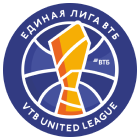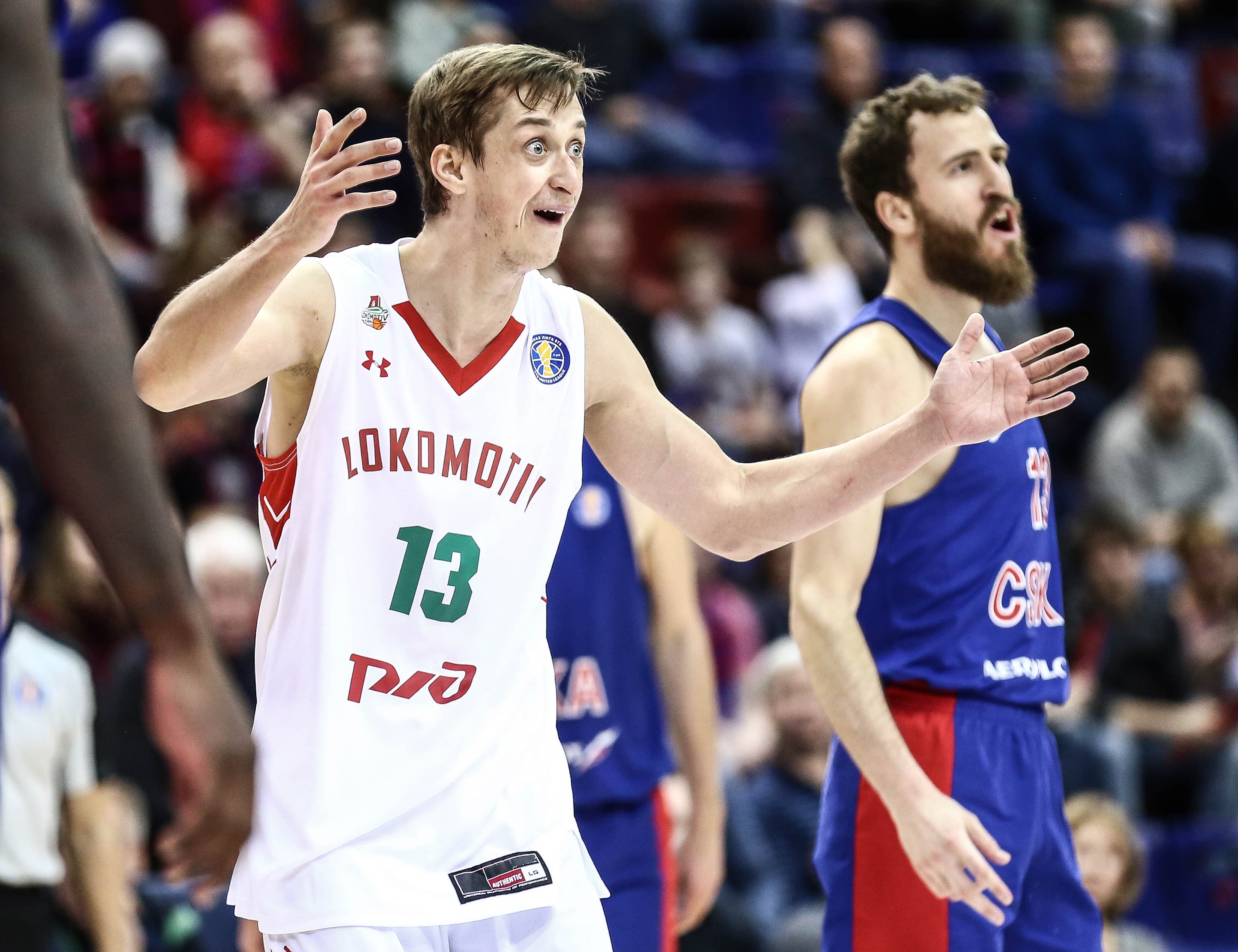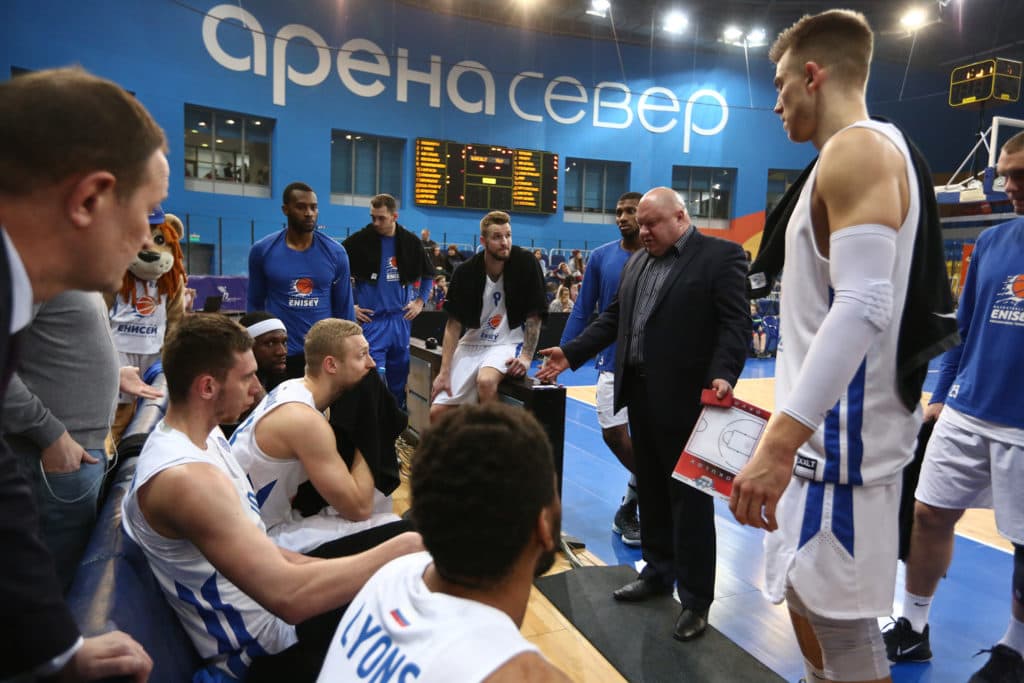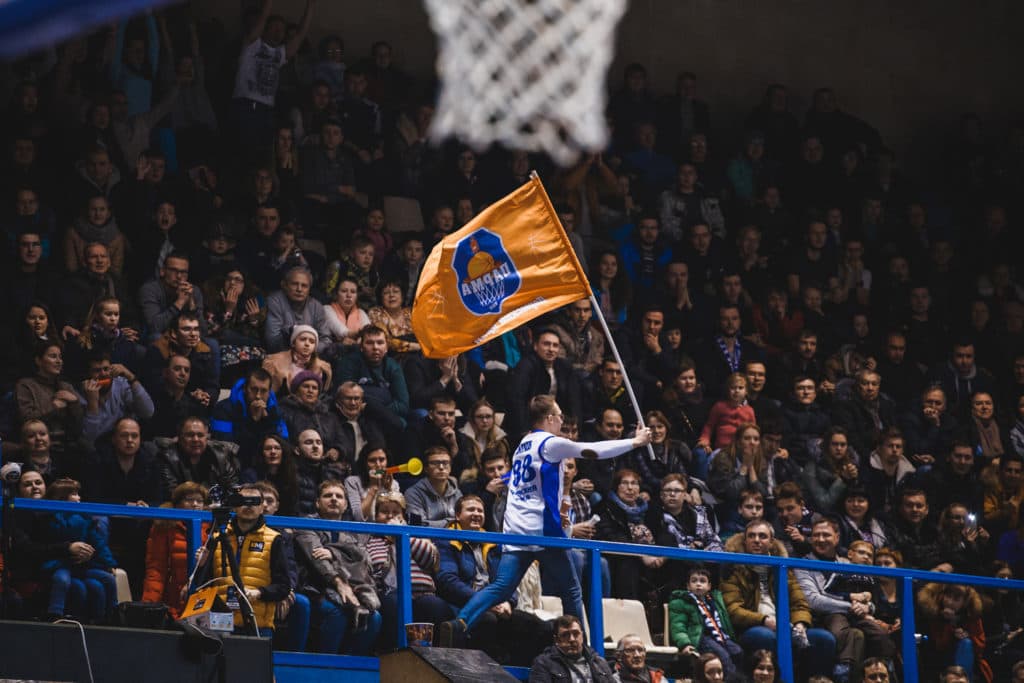The VTB United League is threatening a record number of upsets in the 2017-18 season. Dmitry Gerchikov breaks down why middle-of-the-road teams and underdogs have been knocking off the League’s elite clubs more and more often and whether or not the trend is likely to continue.
***
When the VTB United League first formed, the title contenders almost never experienced setbacks vs. less-heralded competition. The differences in talent were simply too great between rosters. The biggest clubs boasted deep and well-built rosters–some stars ended up becoming role players (take the legendary Theodoros Papaloukas at CSKA, for example) simply because of the sheer volume of options on the bench. At the same time, more modest outfits were often hamstrung by even one bad offseason move–their margin for error was razor-thin. The star players on those teams (which rarely had much depth) typically ran out of steam by the 4th quarter, if not before, resulting in very few nail-biting finishes.
Now the situation has changed substantially, which is good news for the fans. Judge for yourselves. By the halfway point of the season, Kalev and VEF had already defeated Khimki, one of Russia’s two EuroLeague participants. Astana blew out Zenit, a EuroCup club. Led by Evgeny Pashutin, who took over in November, Avtodor surprised Lokomotiv at home, snapping a 22-game winning streak. UNICS, meanwhile, very nearly slipped up in Astana and CSKA had to battle vs. Kalev at home and Zenit barely escaped Minsk with a win. Even PARMA, who won just one game last season, has pushed both CSKA and Zenit to the limit. The standings are further proof of the League’s competitive nature this season with a mere game and a half separating 7th from 13th place and the final two spots in the postseason. So what caused everything to turn upside-down this season? Let’s look at the key factors.
New stars
The League’s “chase pack” (as we’ll refer to them) has become much more careful and attentive when signing foreign stars. Of course, there have always been breakout players that became bona-fide stars while playing at smaller clubs: Take Courtney Fortson, for example. But now virtually every team in the League, even those with very modest budgets, have been remarkably efficient in the offseason. The ease with which Isaiah Briscoe has adapted to Kalev’s game is a model of scouting and coaching acumen. Avtodor’s Justin Robinson is another terrific example, while Ken Brown is doing the same in Riga. Naturally, there are some misses, especially when signing first-year players fresh out of college and new to the scene in Europe, both on the court and beyond. But signing talent with limited resources is always a risky business, which is why missteps like Tsmoki-Minsk’s addition of Sekou Wiggs are an inevitable part of the process. Overall, however, the trend is clear: teams across the League are becoming much better at separating chaff from the wheat.
It’s important to note that clubs typically sign foreigners at either the 1 or the 5 position. These are almost always highly-skilled one-on-one players. There are a few exceptions, like Kalev’s playmaker virtuoso Branko Mirkovic and defense-first center Cedric Simmons, or Tsmoki-Minsk’s perimeter shooter Chris Czerapowicz. Generally, however, they are recruited to play multiple positions and get buckets. In the past, these types of players often thought twice about joining the VTB League. But the League has built a reputation of sending players to the EuroLeague and even the NBA, shifting the narrative and thus widening the net for potential signings.
Schedule
The EuroLeague’s new schedule had a significant impact on Europe’s top clubs. Due to the increase in games, players now shoulder a much heavier load. Meanwhile, given that point differential is one of the key tiebreakers in the EuroLeague, every point matters in every game, no matter who’s winning or losing. It’s much more difficult now to rest key players or spread out minutes in advance of a crucial domestic match-up. The same tendencies can also be observed in the EuroCup and Champions League. As far as the latter is concerned, there are a) several talented Russian teams competing; b) the quality of the competition has risen due to an influx of teams from Italy, France and Turkey. Even the FIBA Europe Cup is no cakewalk any more. Considering the volume of games during the Champions League regular season, a team like Enisey now has to worry about fatigue when facing teams like Riga or Minsk in the VTB League.
It’s also important to recognize that the League’s underdogs have become very good at maximizing every opportunity for an upset. Given the luxury of a full week to prepare for VTB League games, these clubs break down each opponent in great detail and spend each day in practice simulating the upcoming encounter. When their fatigued, worn-out opponents take the court, they are ready to hit where those teams are weakest. That’s often enough to secure a lead at halftime and level the playing field for an exciting second half, where more and more often, the underdog has emerged with a gutsy win.
Travel
This is related to the previous point. The proliferation of games means not only are players spending more time on the court, they are also traveling more, which is never easy. Instead of putting up shots or working on plays, teams are stuck in airports or on buses for hours and hours. It’s exhausting to travel so much, both physically and mentally, especially when flights are delayed or there are other complications on the road. Naturally, it’s difficult to always play your best when you’re jumping from one end of the continent to the other, no matter how deep your bench may be.
There are also situations when a team’s location can play a significant role. Consider Enisey, for example. At the beginning of the VTB United League season, Krasnoyarsk played seven of its first 10 games on the road, while competing simultaneously in the Champions League. The players barely saw the light of day during that stretch due to the wild swings in time zone and geography. Combined with a rash of early-season injuries, it’s not surprising Enisey’s rivals like VEF, Astana and Avtodor gained an edge in the playoff chase. Enisey has yet to overcome its bad start, seeking to end a four-game losing streak next weekend vs. Zenit.
Composure
Once again, examples from the recent past spring to mind. During the 2015-16 season, Vita finished the season with a 1-29 record. During the 2011-12 season, Minsk-2006 also finished the season with a lone win, going 1-15. PARMA became the third club to go an entire season with only one victory, posting a 1-23 record in the 2016-17 campaign. Each of these clubs took on the role of nearly-automatic win for opposing teams, suffering blowout losses to the League’s top teams and little more than moral victories against the bottom tier.
That’s changed. Considering each of the factors listed above, from the front office to the players on the court, everyone recognizes that there are no longer any guarantee wins in the VTB League. With the right approach, discipline and a bit of luck, even CSKA is vulnerable. And if the 3-pointers start dropping, the unthinkable can become reality. The end result is that every team in the League is motivated to prepare and compete for each game, while the bunched-up standings mean very few teams will be able to coast down the stretch, whether they are battling for a higher seed or simply a spot in the postseason. Everyone benefits from the increased competitiveness of the League. The games are more exciting and every weekend adds to the intrigue with only two-plus months remaining in the regular season. Everyone wants to know what so many upsets will mean down the stretch. Expectations are lofty, but the underdogs are also more motivated than ever to keep the surprises coming. It should be a fantastic finish to an already dramatic campaign.


























